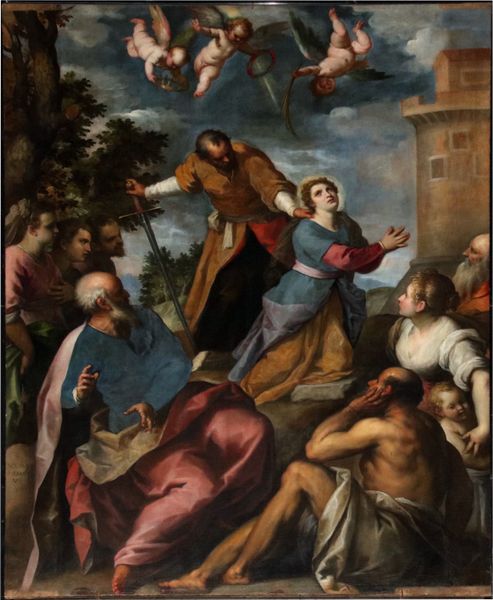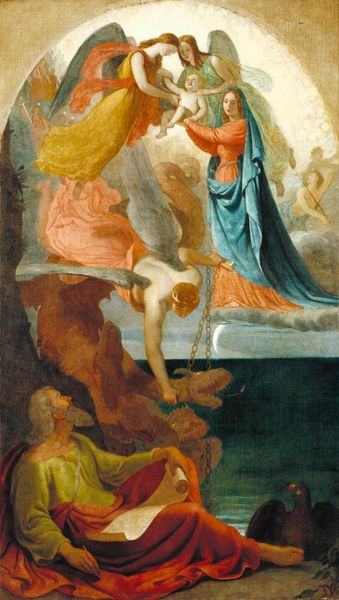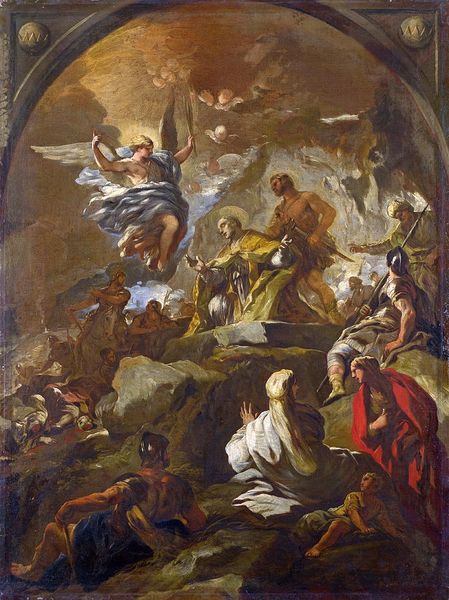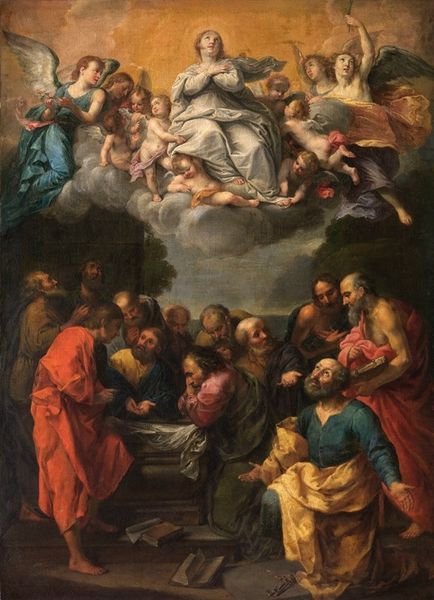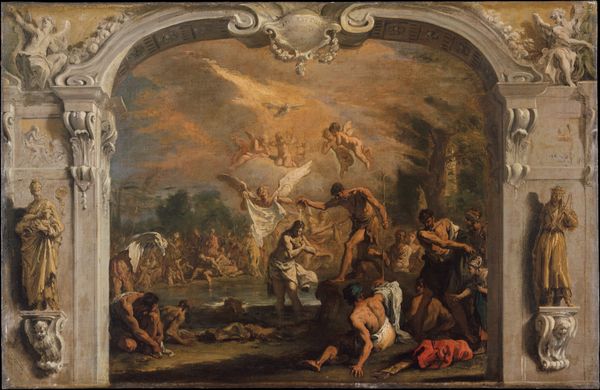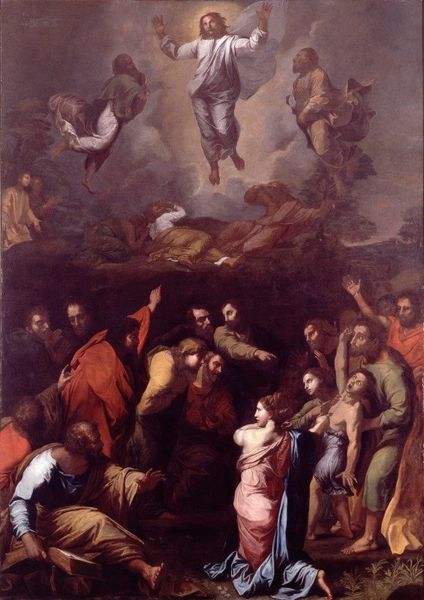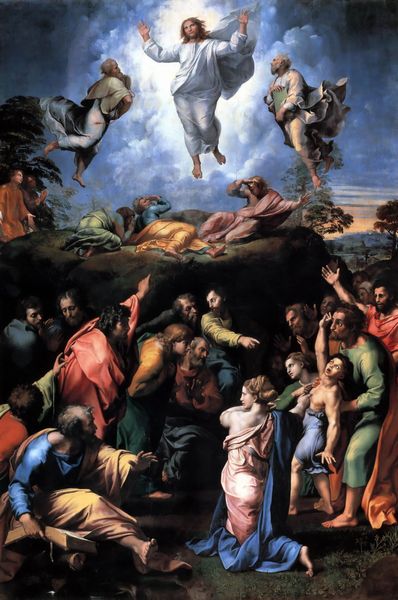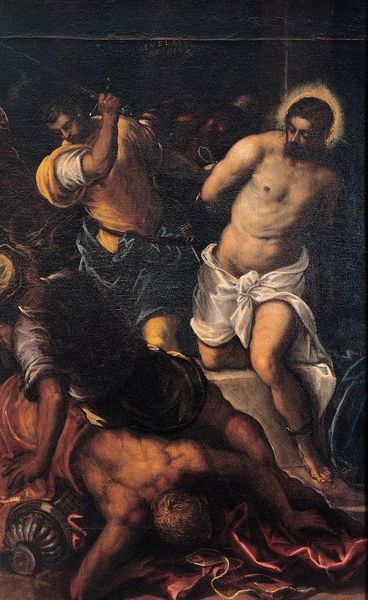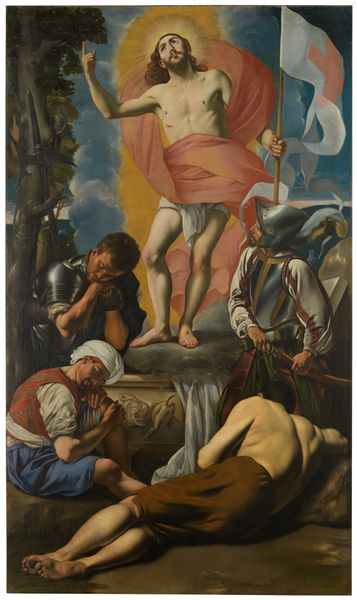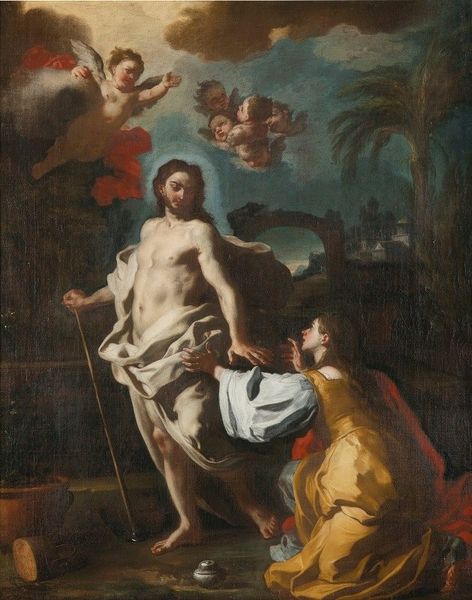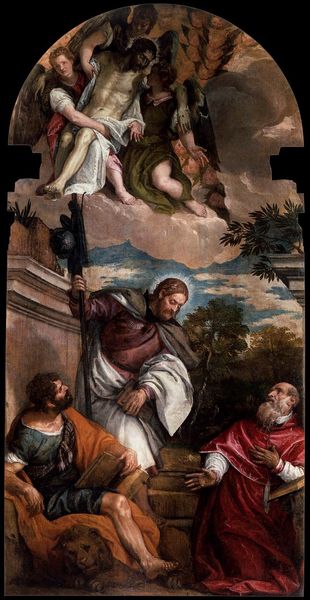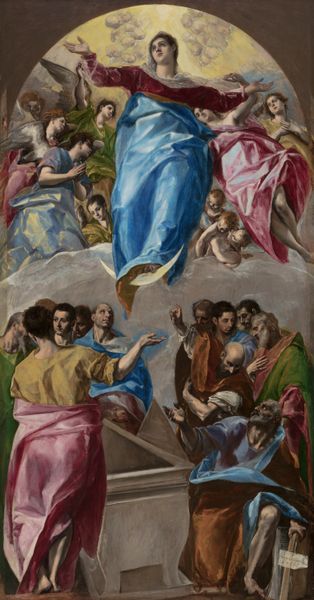
painting, oil-paint
#
baroque
#
painting
#
oil-paint
#
landscape
#
figuration
#
oil painting
#
history-painting
Copyright: Public domain
Curator: I find this artwork simultaneously serene and dynamic, a peculiar blend of calmness and frenetic energy. Editor: Indeed! We're looking at Juan Bautista Maíno's "The Conversion of Saint Paul," executed around 1614. It's quite fascinating how he captures such a pivotal religious moment through the manipulation of paint on canvas. Curator: The oil application is mesmerizing, creating gradients that range from matte opacity to high-gloss translucence that shapes a spectrum of color in the upper zone and adds complexity to the narrative. How does this work resonate historically? Editor: It’s an exemplary piece reflecting the religious and political climate of 17th-century Spain. Maíno was part of a generation striving to invigorate religious art after the decrees of the Council of Trent, imbuing these scenes with a sense of divine intervention in worldly affairs, influencing viewers and reaffirming religious doctrine through visually arresting imagery. Curator: You can practically sense the laborious underpainting beneath each visible brushstroke, but, thinking of consumption, how does that artistic production contribute to this political statement? Editor: That layered approach actually speaks to the complexity of the Catholic Reformation itself. It served as an encouragement for spiritual reform, advocating simplicity and emotional engagement simultaneously within religious life, echoing values held and preached by influential clerics of the time. Curator: I noticed how the textures across fabrics, the musculature of angels, and the figures on the ground display such contrast through various degrees of physical layering. It creates an aesthetic depth beyond representational accuracy. Editor: Exactly! And consider the composition’s role, mirroring socio-political hierarchies! The divine light and heavenly figures literally look down on the earthly realm of humans; even Paul, struck down and humbled, is positioned to physically and metaphorically recognize higher authority. Curator: Seeing those intentional contrasts truly shows the skill employed. This conversation altered my perspective. I’m now considering how its materiality and construction enhanced religious ideology. Editor: Agreed. And by examining "The Conversion," it illuminates how religious narratives become powerful statements influenced by historical context and social purpose, offering insight into the complex interplay of art, religion, and society.
Comments
No comments
Be the first to comment and join the conversation on the ultimate creative platform.
